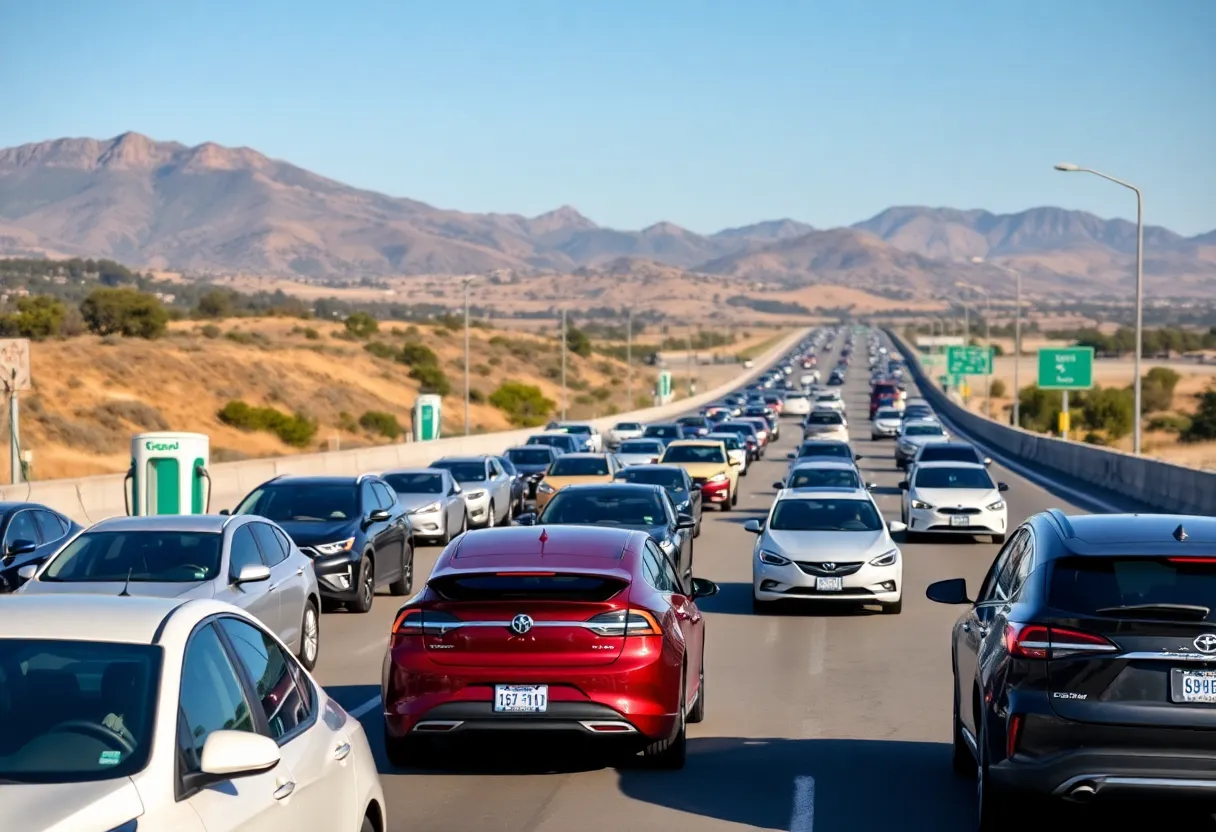News Summary
The U.S. Senate is set to vote on a measure that could reverse California’s ban on new gas-powered car sales by 2035. With electric vehicle sales stagnating and concerns from industry stakeholders about meeting new mandates, the outcome of the vote could reshape the state’s automotive landscape. Governor Newsom and environmental advocates support the ban, while some lawmakers argue it could harm consumers and the economy. The proposed changes signal a significant shift in the regulatory environment for gas and electric vehicles alike.
California’s Gas-Powered Car Ban Under Scrutiny as Senate Prepares to Vote
The U.S. Senate is set to vote next week on a measure that could lift California’s impending ban on the sale of new gas-powered cars by 2035. This proposal, initially introduced during the Trump administration, poses substantial implications for the automobile industry, especially as electric vehicle (EV) sales in California have seen a slowdown, currently holding a market share of approximately 20%. General Motors (GM) has emerged as a vocal supporter of the move to overturn California’s EV mandate.
Concerns are growing among industry stakeholders regarding the upcoming sales mandate, with Brian Maas, President of the California New Car Dealers Association, warning that manufacturers may struggle to meet the 35% requirement for next year’s models. This has led to calls for the California Air Resources Board to pause the mandate to allow the industry time to adjust.
Current Market Dynamics and Consumer Sentiment
As of the first quarter of this year, Tesla has reported a drop in its market share by 12%, a decline partially attributed to political controversies involving its CEO, Elon Musk. Consumer sentiment appears to mirror this uncertainty, with potential buyers expressing a preference for gas-powered cars due to limitations in charging infrastructure and the convenience of traditional fuel options. An example is Joe Edwards, a potential EV buyer, who cited concerns over current EV charging capabilities.
As the debate intensifies, California State Senator Henry Stern has cautioned that a collapse in the EV market could necessitate a reassessment of the state’s ambitious zero-emission goals, prompting further considerations about the future trajectory of American automotive innovation.
Legislative Landscape and Challenges
Senate Majority Leader John Thune (R-S.D.) has indicated that the Senate will review three resolutions aimed at rolling back stricter emissions standards, which include California’s ban on gas-powered vehicle sales. Under the Clean Air Act, California has been granted authority to impose stricter vehicle emissions standards, a regulatory path endorsed by prior administrations.
Governor Gavin Newsom has been a staunch advocate for the state’s goal of prohibiting new gas-powered car sales by 2035, citing the need to mitigate air pollution. The Biden administration reinforced this commitment by approving California’s waiver for enhanced emissions regulations in December 2022. Under these regulations, automakers are required to gradually increase the percentage of zero-emission vehicles sold: 43% by 2027, 68% by 2030, and achieving 100% by 2035.
Political Opposition and Broader Context
In Congress, Republican lawmakers argue that California’s regulations may exceed federally granted authorities and could detrimentally affect consumers and the broader economy. Efforts to block these stringent emissions standards rely on the Congressional Review Act, allowing for a majority vote in both the House and Senate. However, legal challenges persist for California’s rules that may complicate any reversal efforts.
California officials, including Governor Newsom and state regulators, have signaled a readiness to pursue legal action to uphold the state’s emission regulations should Congress attempt to nullify them. Acknowledging that pollutants from vehicles are significant contributors to climate change, California aims to reduce emissions for improved air quality, reflecting a commitment seen by 11 other states that have aligned their strategies with California’s plan.
Infrastructure and Compliance Considerations
The pathway to achieving California’s ambitious regulatory goals raises additional challenges, particularly concerning EV charging infrastructure. Currently, the state has around 84,000 public charging stations. However, it estimates a need for 1.2 million charging stations by 2030 to meet anticipated demand from the growing EV market. Critics of the regulatory approach also point out that California’s electric grid must undergo significant upgrades to accommodate the expected influx of electric vehicles.
Amid these discussions, some states, including Vermont, have opted to pause their own EV sales mandates, citing impracticality in the current market climate. Overall, the forthcoming vote in the Senate could significantly change the landscape for California’s automotive industry and its vision for a zero-emission future.
Deeper Dive: News & Info About This Topic
- Associated Press: Senate California EPA Vehicle Emission Standards
- Wikipedia: California Vehicle Emissions Standards
- ABC News: U.S. Senate’s Effort to Block Vehicle Emission Rules in California
- Google Search: California Gas-Powered Car Ban
- CBS News: California Plan for Gas Car Ban
- Encyclopedia Britannica: Electric Vehicle
- New York Times: California Gas Cars Waiver House Vote
- Google News: California Vehicle Emissions
- San Jose Spotlight: Senate Republicans Plan to Eliminate California Phase-Out of Gas Cars








